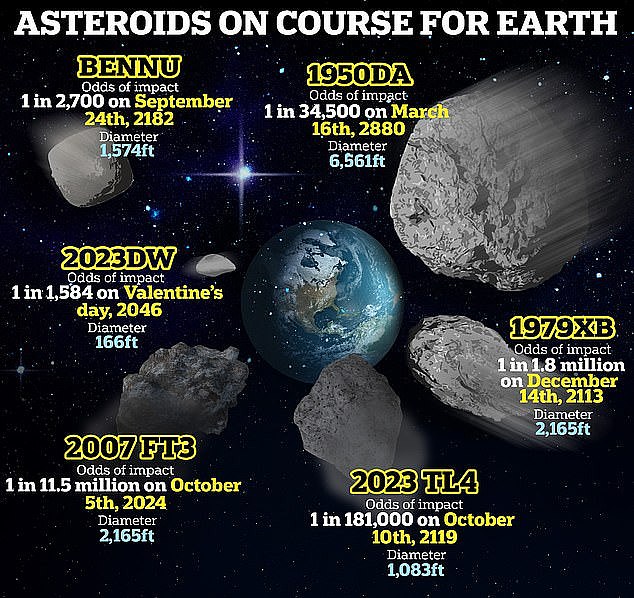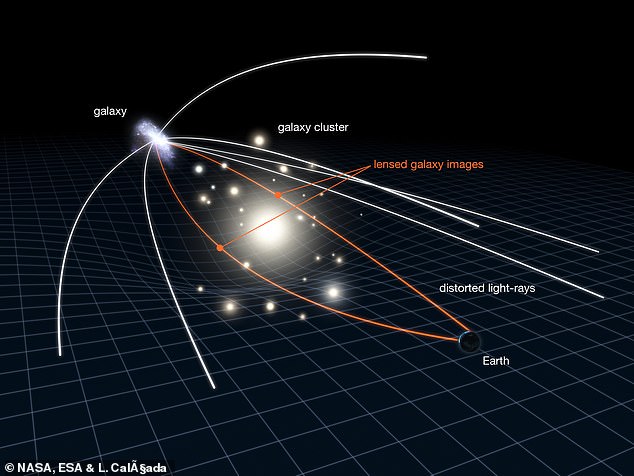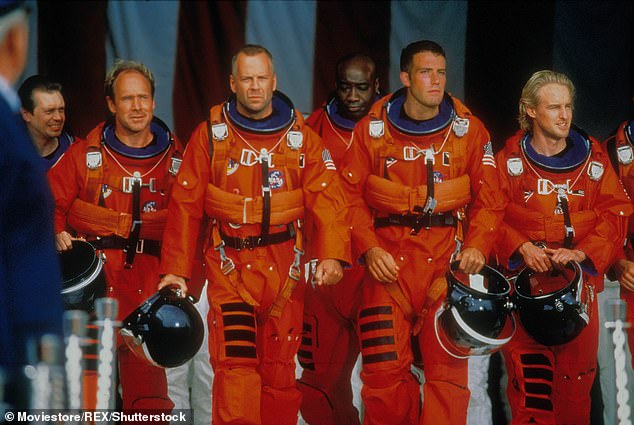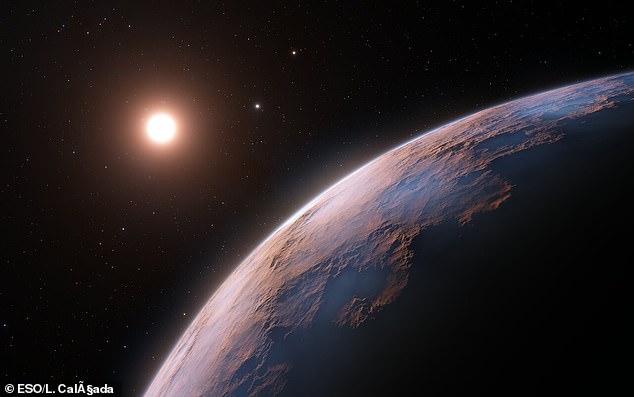Scientists devise a way to save Earth from a catastrophic collision with an asteroid
The idea of a deadly asteroid crashing into Earth might sound like the plot of the latest science fiction blockbuster.
But it could become a reality, according to NASA, which estimates the chance of a deadly asteroid hitting Earth in a given year at about one in 300,000.
Before you panic about our impending doom, there’s good news.
A scientist from the University of Murcia has devised an equation to detect deadly asteroids heading towards our planet.
Professor Oscar del Barco Novillo’s equation is based on the gravitational bending of light and will allow scientists to determine the precise positions of small objects in the solar system.
This includes objects in the Kuiper Belt – a region of icy objects including Pluto and other dwarf planets beyond the orbit of Neptune – and a huge, frozen, spherical shell called the Oort Cloud, the most remote region in our solar system.
This in turn could allow planetary defense networks to spot and prepare for asteroids that could collide with Earth.
This advanced warning could mean the difference between having time to deflect the asteroid onto a safe path and a catastrophic impact.
The idea of a deadly asteroid crashing into Earth might sound like the plot of the latest science fiction blockbuster. But according to NASA, it could become a reality, putting the odds of a deadly asteroid hitting Earth in a given year at about one in 300,000 (stock image)

Before you panic about our impending doom, there’s good news. A scientist from the University of Murcia has devised an equation to detect deadly asteroids heading towards our planet
Normally, light follows a straight path from an object to our eyes, meaning where we see the image is where the object actually is.
However, this is not the case for distant objects such as asteroids due to a phenomenon called ‘gravitational deflection’.
When a ray of light passes through a strong gravitational field, such as that around our sun, it leaves its straight path and follows a curved trajectory.
You can think of this as a ball following a curved path as it rolls over an uneven surface.
The idea that gravity could bend passing light rays was first proposed by Sir Isaac Newton in 1730.
It wasn’t until Albert Einstein proposed his general theory of relativity in 1916 that scientists were able to confirm that this was actually the case.
The problem for astronomers is that gravitational deflection means that the image we see of a distant object does not correspond to where the object actually is.
Professor Novillo told MailOnline: ‘When sunlight is reflected off the small objects in the solar system, such as asteroids, the light rays we receive on Earth are bent by the sun and large planets such as Jupiter.

Normally, light follows a straight path from an object to our eyes, meaning where we see the image is where the object actually is. However, this is not the case for distant objects such as asteroids due to a phenomenon called ‘gravitational deflection’.
“In this sense, the actual positions of these small bodies have shifted, so this effect must be taken into account in the equations of motion of these small bodies.”
That may not be a problem for most applications, but when it comes to calculating the orbit of a potentially dangerous asteroid, even a small miscalculation can be fatal.
Professor Novillo’s solution, published in Monthly notices of the Royal Astronomical Societyis to treat gravity as if it were a physical medium, like water, to find out how much light bends as it passes through it.
Using this formula, Professor Novillo calculated the angle of deflection for light rays coming from Mercury at various points in its orbit.
When he compared the results with those based on Newton’s and Einstein’s equations, he found that there was a difference of as much as 15.8 percent when Mercury was at its greatest distance from the Sun.
Professor Novillo says the main consequence of this discovery is that it will “allow better calculation of the orbits of small objects in the solar system, which could be potentially dangerous to Earth.”
While it won’t help detect asteroids in the first place, it will help determine a more precise location for these objects and, consequently, determine their orbits.
Space agencies such as NASA and the European Space Agency (ESA) are currently investigating ways in which humanity could avoid a collision with an asteroid.

Just like in the movie Armageddon (pictured), humanity can potentially deflect an incoming asteroid, as long as there is time to organize a response
For example, ESA’s DART mission used a satellite the size of a refrigerator to crash into the space rock Dimorphos to see if an asteroid could be knocked out of orbit.
Although the results will be confirmed by the Hera mission late next year, early observations show that the impact deflected Dimorphos’ orbit.
In theory, humanity could use a similar kamikaze satellite to deflect the path of a dangerous asteroid on its way to Earth.
Doing so, however, would require years of advance warning to give space agencies time to plan the mission and for the asteroid to drift out of Earth’s path.
That’s why it’s so crucial that space agencies have an accurate way to assess the locations and orbits of asteroids floating through the solar system.
In addition to planetary defense, this equation could also be used to deepen our understanding of the universe.
The hope is that scientists can now calculate the exact location of the closest star to Earth, Proxima Centauri.
Proxima Centauri is 4.25 light-years away and is believed to have three exoplanets orbiting it.

This discovery could also be used to determine the exact location of Proxima Centauri B (artist’s impression). If this exoplanet is in the habitable zone of its star, it could be the closest Earth-like planet to our Sun
If the location could be pinpointed, it would also help scientists closely study the planets’ orbits to find out whether they are indeed within their star’s habitable zone.
Furthermore, Professor Novillo’s discovery could even help scientists map the furthest reaches of space.
Professor Novillo says: ‘Distant galaxies, which are distorted and enlarged by large amounts of intervening mass, such as galaxy clusters, can be precisely located with this new exact equation.’
Over the next six years, ESA’s Euclid mission will observe the shapes, distances and motions of billions of galaxies out to 10 billion light-years – with the aim of creating the largest cosmic 3D map ever created.
Armed with this equation, scientists could produce even more accurate maps that could help understand how dark matter and dark energy shaped the universe into what we see today.
